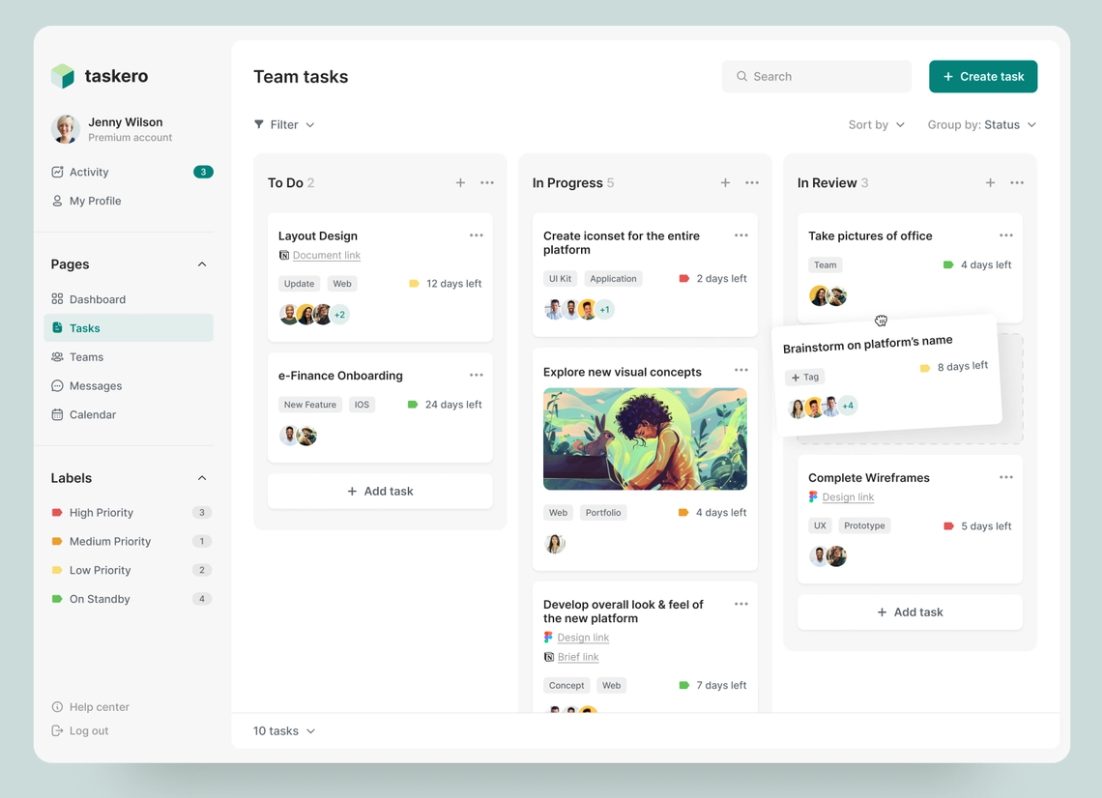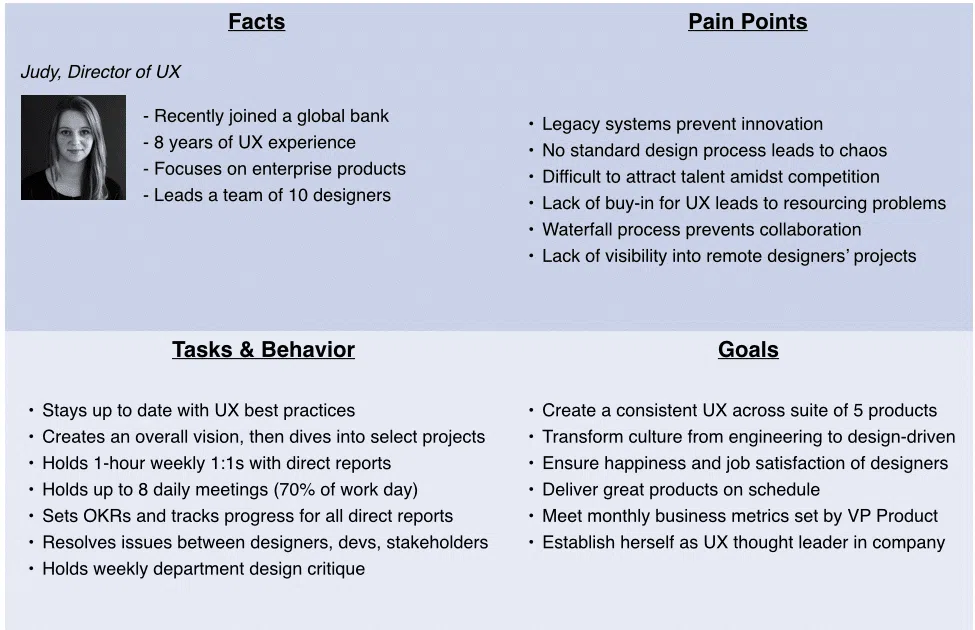The truth is that the success of any project strategy largely depends on the degree of stakeholder involvement in it. The higher the involvement is, the better the quality of communication, which simplifies and accelerates the team’s progress to the utmost. What if there are several of them? How to manage multiple stakeholders in a project? Let’s see.

Some Dribbble design
Who’s Stakeholder in a Project?
Stakeholders are all people in digital product agency who participate in the project and are somehow dependent on it or influence the course of work.
Since working with stakeholders is one of the main tasks of a design team, project managers, and sometimes business analysts, it is important for them to find an approach to each other, correctly prioritize and organize their interaction to keep up with the terms.
How to Manage Multiple Stakeholders: Practical Tips
If we take an average design team, within a team, a business analyst will be the one who most often communicates with PM, Architect, Designer, Dev Lead + QA Lead if there is one. Since all these people are colleagues, problems in building communication between them do not arise so often.
However, with external stakeholders on the client side – PO (Product Owner), SME (Subject Matter Expert if any), Tech Lead (this may be Arch, CTO, Tech Product Manager), and Sponsor – the situation may differ.
If the project is new, business analysts often have to develop new engagement processes from scratch to build effective relations with each of them.
These tasks strongly intersect with managerial ones but are aimed at analyzing the client’s business, including all the stakeholders from the client’s side. BA creates a list of key participants, then ranks each position according to certain criteria: expertise, level of influence on project decisions, time availability, and so on. Thus, managing all these people becomes even harder.
To make it easier, there are several practical tips to apply. So, you are welcome to consider some of these:
1) Design thinking approach
Design Thinking is an approach to development that is often used in the design, product management, and startups. The idea is to break the work on the product into several simple stages (iterations) that also allow for simplifying the communication process:
- Understand
You need to understand the essence of the problem that the product may potentially solve and align it among all participants from the start.
- Empathize
Put yourself in your potential user’s shoes and understand the problems they have to emphasize the most essential pains to eliminate.
- Define
Identify the most solid user problems; clearly formulate them in order to develop further the ways to provide with on how to solve them via the product.
- Ideate
Ideation allows continuing design thinking in order to come up with real solutions before you ever create anything. Eliminate mistakes here if any.
- Prototype
Create a prototype only when you all are through with the previous stages, not to create a product and then find that it has drawbacks.
- Test
Quality assurance goes after you test the functional prototype. Do not confuse yourself when you make a mistake in the initial stage with the tests you already make to eliminate minor defects within the prototypes. Conduct testing of functions, not the idea. Idea and your hypotheses are to be checked from the start.
Pros:
- Increases stakeholder engagement.
They understand better: what a business analyst does on a project, as we’ll as all the rest of the team, how requirements are formed, how communication takes place, etc.
- Highlights the expectations of key project participants.
It is clear what and who expects from the joint work. Also, this data can be easily transferred from the board to the documents and reports of stakeholders.
- Can be used at any stage of the project.
It can be initiated both at the start, and in the middle or even at the last stages of work.
Cons:
- Stakeholder training is required.
Naturally, you should explain to them what Design Thinking is, how it works, why it is needed and if you work like that, why they also should.
- The process is time-consuming.
You need to organize all the participants, then analyse the data, develop a further process and bring it all into a formal form that will be clear to everyone. The result may satisfy most but not all stakeholders. This is true for all processes that are extended in time.
When to apply?
Design thinking can be used on any organization for the complex project when the task is to develop a process of interaction with a large number of stakeholders from scratch or change the current format already in the process. It is effective both in the case of single place location and distributed teams.
Thus, design thinking approach can be successfully applied not only in product development but also in creating processes for interaction between business analysts and stakeholders.
As a result, if the results of all stages satisfy the requirements for the task, the solution is launched further into production. If there are any shortcomings, there is always the opportunity to return to any of the stages and analyze all the steps again. In general, they help get all the stakeholders on the same page alongside the team members in no time. Have a try. Also, try to combine design & business thinking.
2) User Persona for Stakeholders
User Persona is a technique widely used by designers. The idea is that they come up with a character (future user) that has vital characteristics for the product. Then they are described, and already based on this data. A design is developed that is intended to please future users. In the Stakeholder Persona, everything is the same, only instead of a character we use the data of a real person – a stakeholder we know.
As a result of building personas, we get enough data, thanks to the analysis of which we may better understand the nature of the stakeholders their motivation, and approaches to work.
Pros:
- Structuring knowledge.
There is a necessary pool of important characteristics of stakeholders, according to them the data is searched and recorded in a form convenient for a business analyst. Usually tables are made, where the left side is the query of interest, and the right side is the data on it or more. Here’s an example from Uxpin:
- Easy to collect the data.
This can be done as you communicate with key project participants or through a quick interview with the same project manager at the time of onboarding.
- Easy to share the data.
When new people appear on the project and they also need to communicate with stakeholders, they receive all the data on the person in a convenient format.
Cons:
This approach is extremely resource-intensive and time-consuming, which is why it is not always advisable. BAs or any other team member in charge should make an effort to really keep a record of all stuff like that.
When to apply?
The stakeholder persona is very useful for long-term projects with a really large list of stakeholders. They will have to validate the requirements, and for this, it is important that they quickly give feedback and provide high-quality information. Without a good relationship between the business analyst and stakeholders, this process is difficult to build effectively, even on a small project, and in the case of a large one, this is a real thing to do. And this structured approach just makes things easier.
3) Manage naturally
If you’re short of time or have any other reasons to skip the abovementioned ways, how you effectively manage your all stakeholders is just managed naturally. Here you may do that in a free manner like:
- Summarize Each Stakeholder’s Status.
- Decide What You Want From Each Stakeholder.
- Identify Your Key Message to Each Stakeholder.
- Identify Your Stakeholder Communication Approach.
- Implement Your Stakeholder Management Plan, etc.
Make sure you identify them and watch them closely. To clearly identify your stakeholders and figure out what motivates them by listening to what they say, meeting their tête-à-tête, and keeping in touch at least as much as you can be fine.

Also, do not forget to use a powerful tool to plan and manage projects online efficiently. Some of them you may try for free if you do not yet understand which’s the best for you. When you do save time and hit your deadlines with your ideal easy-to-use project management tool. Also, stay on track with all the process participants, including stakeholders in no time.
Conclusion
There are a couple of practical ways for managing stakeholders within design projects with fun. You choose which one to use or not. Not all of them may be fine in terms of your particular case. The ability to properly build relationships and the process of interaction with stakeholders is one of the major tasks, so it’s wise to know at least various tools and techniques that may help with this. Stakeholder Persona and Design Thinking are definitely at the TOP of the most effective ones, but feel free to use any approach you like. Applying them correctly in practice, you can always better understand how to manage stakeholders, set up a comfortable and, more importantly, productive work with any number of stakeholders, regardless of the level of the project. Good luck!





















